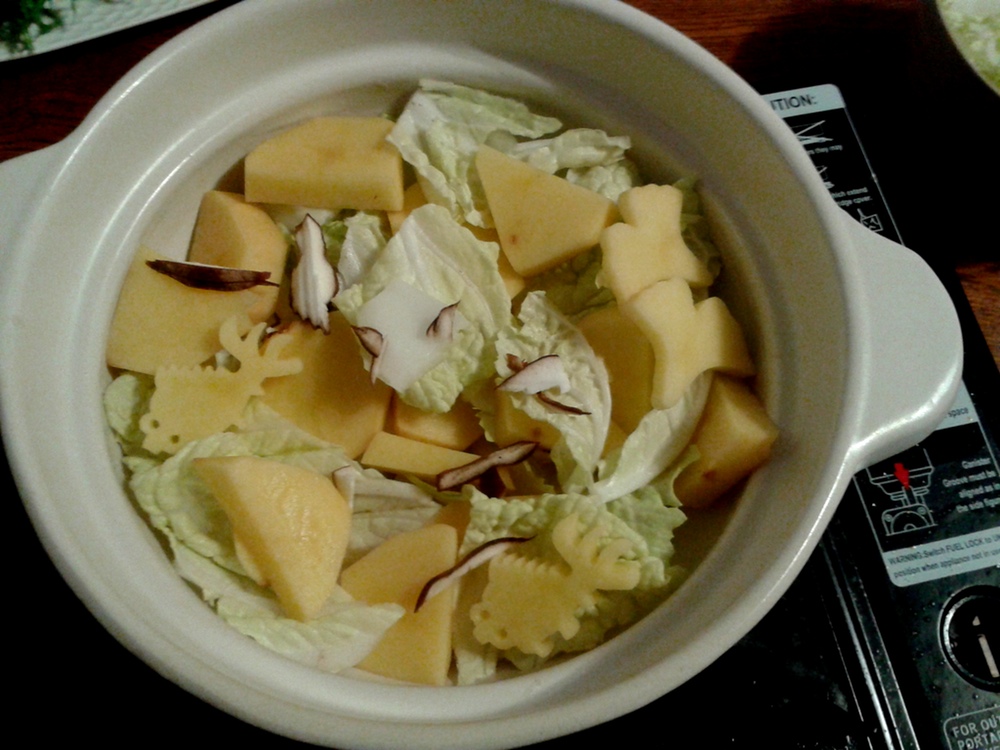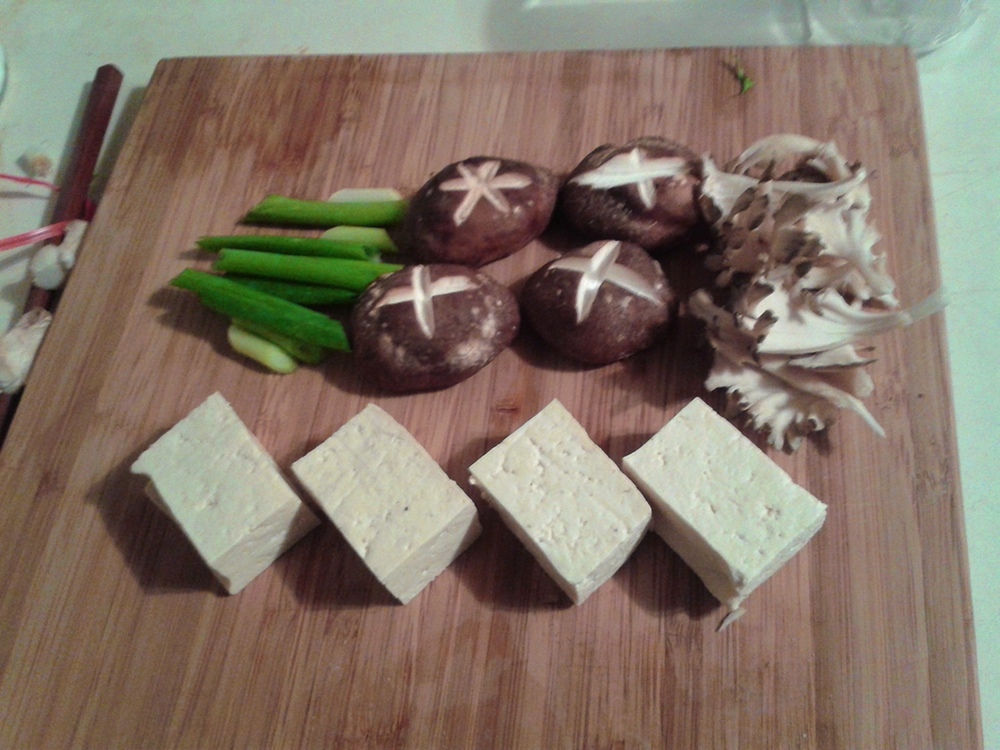Ishikari Nabe (Salmon Hot Pot)
2015 Jan 17
The recipe used was from Japanese Hot Pot, but the salmon was prepared according to Cooking with Dog. The ingredients cost ~$30, but the following can stretch out to other meals: tofu, cabbage, potato, sweet potato noodle and miso. We saved some of the 1/2 lb of salmon for breakfast the next day, to be served with miso soup.
This started with a trip to the Japanese grocery to buy a donabe, a clay pot used for nabemono or hot pot cooking. Mine fits about 2 cups and is meant for 1 or 2 people. Ishikari nabe was the first choice, as all the ingredients are easy to find in the winter. For whatever cruel reason, the farmers’ market now runs yearlong, so that you can eat more unsold squash and tubers and sit out in the miserable rain with the rest of the cold workers. The indigenous salmon fishermen had the sense of mind to stay at home, which meant that my 1/2 pound of salmon was thawed from frozen and not as exquisitely oily. I didn’t expect to find scallion, but I did find little green onions and mizuna. One vendor insisted I simply take home the horseradish, but that would require more research on my part – my home palate raised on Tex-Mex is completely unfamiliar with hot things that aren’t chiles. I also made my loved one buy me a kabocha squash that I carried in my purse.

The next trip was to the famed local tofu-ery, where you can purchase fresh soy product on the spot. While I am happy to buy tofu from a package, there is no comparison when it comes to fresh tofu. The “firm” style is truly firm, with a wonderful texture and a delicate yet flavorful soybean taste. In the nabe, the tofu held up well. On the surface it had a salmon flavor, but as you bite into it, the tofu flavor is preserved.

The locally produced miso had been out of stock at the nearest grocery store, so I checked the produce store near the tofu-ery. After locating coconut cream pie and an extensive collection of wood chips, I discovered three of the miso maker’s products! We came home with one shiro miso each. Halving the recipe called for 6 tablespoons of miso, which seemed excessive so we settled on 5. As it is a chunky miso, we took turns grinding it into a fine paste with a hopelessly small suribachi. Upon eating, we realized this was a 3 or 4 tablespoon job. I took pity for the recipe authors, as they have never had miso as delicious or potent as our city miso. The broth mixture didn’t even fit in the bowl. Perhaps they are true foreign men who smoke indoors and have long forgotten the taste of unadulterated food.

The surprise of the evening was the mizuna. I knew it was some kind of bitter leafy thing, but was unsure. The recipe calls for shungiku, which will be hard to find this time of year. I had written down the Vietnamese name in case I had to find it at the local market, but while walking around the farmers’ market like a wet sponge I spotted it in front of me. My partner said to forget about the shungiku and I threw down my $2.50. The greens are the last to be added, after the salmon cooks. They end up blanched and their bitter taste defanged, adding a nice contrast to the meal. With the leftover mizuna, one could easily make hari hari nabe, a simple dish with mizuna and abura age (also from this book).

The only drawback to this dish is the amazing flatulance that accompanies it. Noxious yet savory, this silent bomb wafts its way past our rump cheeks to the great indoors. I do not regret this factor, as it safely cleared my bowels from being constipated this week. #yolo